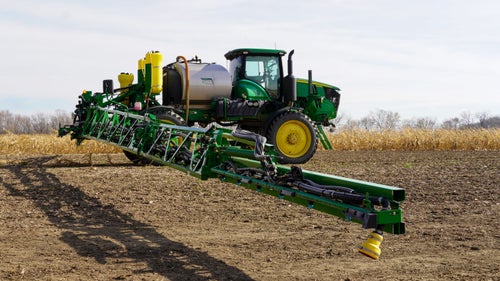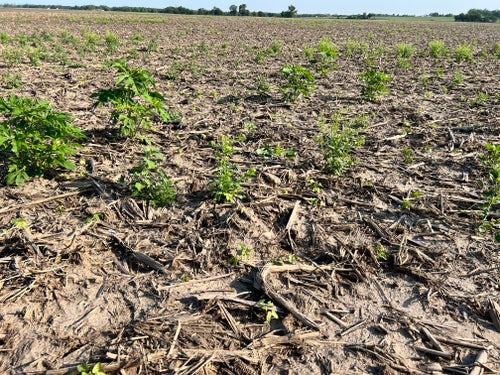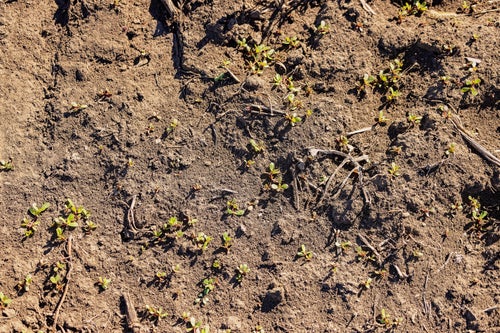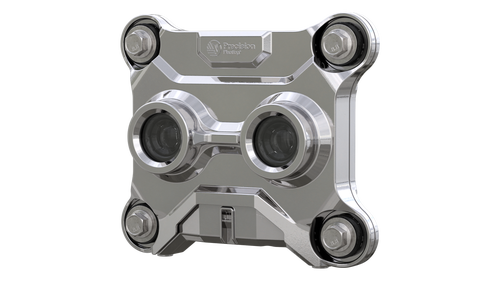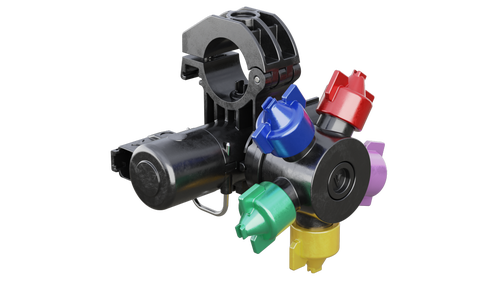
Key Points
- Choose the right chemical rate
Weigh the benefits of higher rate to determine if the added cost is worth it. - Consider soil texture and its effects on residual herbicides
Different soils metabolize residual herbicides at different rates, ensure your chemical rate aligns with your soil texture. - Use field history to fine-tune rates
You know your land better than anyone else. By using previous years observations you can determine whether you should be on the low or high end of the chemical rate range. - Balance effectiveness and cost
Identify where you will get the most return on your investment in your chemical weed control program.
What to consider when establishing your weed control program
Establishing a chemical weed control program is essential to protect your crops and optimize yields. However, determining the correct rate of herbicides to apply can be challenging. Different products and soil types require specific dosages for effective and efficient weed control, and choosing the right application rate can make a big difference in terms of cost and weed control. Here’s a basic guide to understanding how to decide herbicide chemical rates.
1. Choose the right chemical rate
Herbicide labels often provide a range of chemical rates, leaving the applicator to determine which end of the range is appropriate for the application.
For instance, Liberty® herbicide may list a dosage range of 29 to 43 fluid ounces, and Diflexx® could allow up to 2.5 times the minimum dosage. The wider the range, the more the cost varies, so you must weigh the benefits of higher rates against the added expenses. The key question becomes whether to apply the maximum recommended rate for guaranteed effectiveness or to reduce costs with a lower rate that might still control weeds effectively.
It is important to recognize the two different types of rate present on the chemical label: chemical rate and carrier rate. Aaron Herrmann, Research Agronomist, explains the difference between the two and the impact each have on application.
- Chemical rate is the amount of active ingredient per acre
This value is adjusted based on the weed species present in the field, as well as considering the size and density of those weeds. - Carrier rate is the spray volume per acre
This value is used to adjust coverage in the field.
2. Choose residual herbicides based on soil texture
Soil residuals remain active in the soil to prevent weed germination over time. Soil texture has a large impact on the effectiveness of soil residuals because just like medications are metabolized differently by people based on body composition, soils “metabolize” herbicides at different rates depending on soil texture.
Sandy soils, which have a low “metabolism,” require less residual herbicide, while heavier clay soils, which break down herbicides more rapidly, may need a higher application rate to be effective. Applying too much residual herbicide to sandy soils risks crop damage, while applying too little to clay soils can lead to insufficient weed control. It's important to utilize the residual herbicide label to match the correct chemical rate to your soil texture.
3. Use field history to fine-tune rates
In addition to soil type, field history is a useful tool for adjusting herbicide rates. Fields that have had significant weed issues in the past may benefit from the higher end of the rate range to provide stronger control. Whereas, fields with a long history of successful weed management may perform well with a lower application rate. Basing the dosage on field history allows you to control costs while still providing effective weed control.
4. Balance effectiveness with cost
Finding the right chemical rate is about balancing cost and effectiveness. Applying the maximum rate for every application can provide robust control, but it may not always be necessary. Considering factors such as herbicide type, soil texture, and field conditions allows you to target weed control efforts where they’re needed most, potentially saving on input costs while still maintaining control over weeds.
By taking a strategic approach to herbicide rates, you can build a cost-effective and efficient weed control program that benefits both crop yields and farm budgets.
Establishing a chemical weed control program is just the beginning. Determining the right dosage based on herbicide type, soil texture, and field history is just as essential to maximize effectiveness and control costs.
Disclaimer: Always read and follow label instructions and consult your chemical representative if you have questions.
